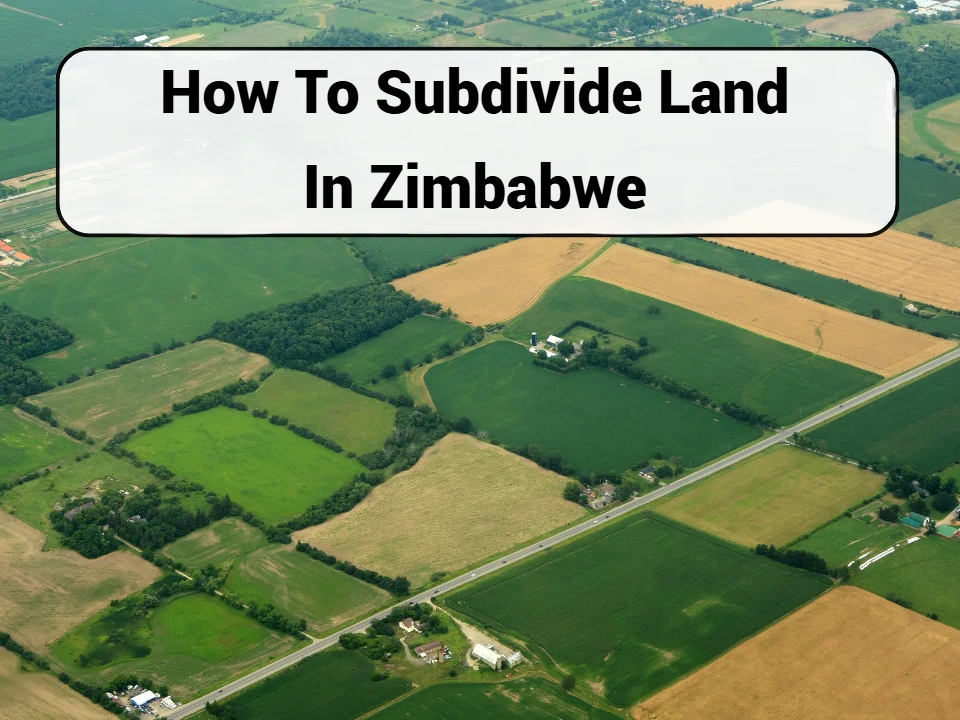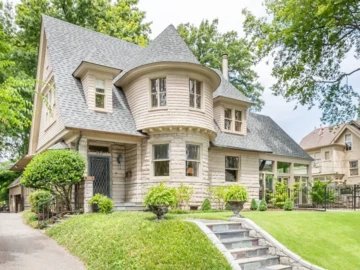Subdividing land in Zimbabwe allows property owners to split a large plot into smaller plots for sale, development, or investment purposes. With urban land scarcity and high demand for residential plots, land subdivision has become an attractive opportunity for developers and investors.
2025 Snapshot:
- Average price of subdivided plots in Harare: US $25,000–$60,000 for 400–600 m²
- Popular suburbs for subdivision: Borrowdale, Mount Pleasant, Greendale, Highlands
- Subdivision turnaround time: 6–12 months depending on approvals and infrastructure
This guide provides a step-by-step process, legal requirements, and practical tips for subdividing land in Zimbabwe.
Why Subdivide Land?
1. Increase Property Value
- Smaller plots sell faster and can generate higher total income than a single large plot.
2. Facilitate Development
- Ideal for building cluster homes, townhouses, or individual houses.
3. Investment Opportunity
- Selling subdivided plots attracts buyers in high-demand suburbs.
4. Estate Planning or Family Distribution
- Makes it easier to transfer land to multiple family members.
Legal Requirements for Land Subdivision
To legally subdivide land in Zimbabwe, the following requirements must be met:
1. Title Deed Verification
- Ensure the land is fully owned and free of disputes or encumbrances.
2. Zoning and Land Use Approval
- Verify the local council’s zoning regulations to confirm the land can be subdivided.
3. Surveyor Services
- Hire a licensed land surveyor to measure, mark, and prepare the subdivision plan.
4. Council and Local Authority Approval
- Submit subdivision plans to the relevant Urban or Rural District Council for approval.
5. Roads and Infrastructure Planning
- Ensure access roads, water, electricity, and sewage systems are planned according to council requirements.
6. Deeds Office Registration
- Each new subdivided plot must be registered separately at the Deeds Office to obtain individual title deeds.
Step-by-Step Process for Subdivision
Step 1: Conduct Due Diligence
- Confirm zoning, permissible density, and land use regulations with the local council.
Step 2: Hire a Licensed Surveyor
- Prepare subdivision layout, plot boundaries, and allocate roads and common areas if needed.
Step 3: Submit Plans to the Council
- Council reviews for compliance with planning regulations and infrastructure requirements.
Step 4: Obtain Approvals
- Receive official approval from the council or relevant local authority.
Step 5: Install Infrastructure (if required)
- Roads, water connections, electricity, and sewer systems must meet council standards.
Step 6: Register Plots at the Deeds Office
- Each subdivided plot receives a new title deed, allowing legal sale or development.
Costs Involved in Subdividing Land
Costs vary depending on land size, location, and infrastructure requirements:
|
Cost Component |
Estimated Cost (USD) |
Notes |
|
Surveyor fees |
$1,500–$3,500 |
Depends on plot size and complexity |
|
Council fees / approvals |
$500–$1,500 |
Varies by urban or rural council |
|
Infrastructure (roads, water, electricity) |
$5,000–$25,000 |
Required for new developments |
|
Deeds registration |
$500–$2,000 |
Per subdivided plot |
|
Legal/conveyancer fees |
$300–$1,000 |
For preparation and registration |
Tip: Total costs can range from US $8,000 to $35,000+ depending on complexity and infrastructure.
Practical Tips for Successful Land Subdivision
1. Research Market Demand
- Identify high-demand areas and preferred plot sizes (400–600 m² popular in urban areas).
2. Plan Infrastructure Early
- Roads, water, electricity, and drainage systems are critical for council approval and buyer appeal.
3. Work with Licensed Professionals
- Surveyors, lawyers, and licensed agents ensure compliance and smooth registration.
4. Budget for Unexpected Costs
- Account for possible delays or additional infrastructure requirements.
5. Consider Long-Term Investment
- Subdivision increases total land value and creates multiple saleable or rentable plots.
Example Scenario
Scenario:
- Owner has a 2,000 m² plot in Greendale, Harare.
- Hires a licensed surveyor to create 4 subdivided plots of 500 m² each, with a 100 m² road allocation.
- Council approves subdivision; infrastructure installed.
- Each plot registered separately at the Deeds Office with new title deeds.
- Each plot sells for US $50,000, generating US $200,000 total, compared to selling the original 2,000 m² plot for US $120,000.
Outcome: Subdivision increased overall profit and provided multiple investment opportunities.
Summary
Subdividing land in Zimbabwe is a strategic way to increase property value and create investment opportunities.
- Key steps: verify ownership, comply with zoning laws, hire licensed surveyors, obtain council approvals, and register new plots at the Deeds Office.
- 2025 Insight: High-demand urban areas such as Harare, Bulawayo, and Mutare offer strong potential for profitable subdivisions, especially for residential and cluster housing developments.
Key Takeaway: Proper planning, professional guidance, and compliance with legal requirements are essential to successfully subdivide land in Zimbabwe and maximize returns.
 Continue with Facebook
Continue with Facebook
 Continue with Email
Continue with Email














